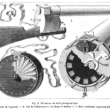(Source: John T. Consoli/University of Maryland via Flickr)
I never had much time or sympathy for working-class renegades until I read Allison Hurst’s College and the Working Class.
Hurst, a sociologist at Furman University, classifies first-generation college students as renegades if they “have learned to value what the greater society values, academic success, social prestige, and high class position. They believe that moving away from families and assimilating into the mainstream are necessary for achievement.” Loyalists, in contrast, are college students from working-class families whose “first priority is to their home communities and [they] are sometimes willing to forgo success if this is predicated on assimilation [to middle-class values and norms].”
| This article was originally published by Working-Class Perspectives and appears here by way of special arrangement with that publication’s editors. |
As a lifelong (if sometimes unfaithful) loyalist, married to another loyalist, I’ve usually seen renegades’ headlong pursuit of middle-class life as too often leading them to adopt extreme versions of what I see as the worst aspects of middle-class culture—a single-minded focus on personal achievement and publicly recognized accomplishments, which often leads to unreliable serial friendships (if any friendships at all) and a never-far-from-the-surface status anxiety.
Though in the early stages, renegades’ determined rejection of and flight from working-class ways can seem heroically self-actualizing, all too often it turns into phony resume-building, bitterness at being “left behind” no matter where they end up, and a guilt-ridden substitution of show for substance. In late middle age this pattern can get particularly distasteful, regardless of class background, when the exercise of arbitrary power over others begins to compensate for real accomplishment, thereby spreading the misery.
Hurst’s exploration of today’s “first-generation college students,” however, reveals a historical situation so very different from the one I experienced that I have changed my mind. Expressing a broad range of empathy for the variety of complex situations working-class college students face today, Hurst captures both the loyalists’ and the renegades’ worlds during a time when “finding yourself” can severely undermine the development of your “competitive advantages.”
|
Higher education in America needs a stronger, more vital working-class presence to save it from its own cocky cultural hegemony and its growing attraction to pleasing an increasingly crass Big Money ruling class.
|
Though also insightful about the problems of applying and paying for higher education today, Hurst’s analysis focuses on the clash of cultures working-class students experience in a variety of forms, a clash Barbara Jensen has so poignantly revealed at all levels of education (and life) in Reading Classes: On Culture and Classism in America. Hurst draws on recent university research on “retaining first-generation college students” as well as on the more nuanced efforts of her colleagues in the Association of Working-Class Academics to argue for a wide array of practices that universities could adopt to help working-class students negotiate the nexus between everyday practical problems and more deeply rooted cultural issues.
What I found most insightful, however, was her creation of five composite characters—three loyalists and two renegades of diverse races/ethnicities—whose progress through the same state university is followed throughout the book. These characters illustrate both common problems and complexly different ways of handling them. Collectively, Hurst says of them, “This generation of working-class college students … shares some things in common with past generations of ‘scholarship boys and girls,’ but they are also unique in that they are pushed, not just pulled, into college.”
As someone who went to college in the 1960s at four different undergraduate institutions off and on for seven years and who was anything but a “scholarship boy,” I realize how much easier it was then. College was an option, not a necessity for one thing—no push, all pull. It also cost a lot less, and many community colleges, university extensions, and universities themselves had a vital sense of mission about expanding democratic values as well as economic opportunities. And as the 1960s progressed, more and more middle-class (and especially upper middle class) students were challenging the middle-class manners, mores, and values of the time. Working-class life then exerted its own considerable pull, making the culture clash possibly more difficult in some ways than it is today, but there was also so much more space to mix and match, consciously adopting some middle-class ways while rejecting others—more ways to be a “straddler” and not go “all in.” On both sides of college, working-class life is much less attractive today—more punishing at work, more insecure at home, and weaker as a proud and independent culture that can unselfconsciously scoff at middle-class ways.
My natural sympathies were with Hurst’s three loyalists, but fearing the economic consequences of their loyalties, I found myself hoping they would go “more all in” than they did—before realizing that there really is no more or less to “all in.” As loyalists, however, they face culturally richer but more economically insecure futures in a job market that has only two jobs for every three college graduates. One of Hurst’s two renegades, on the other hand, is fleeing a family that abandoned her in her mid-teens, and the other is motivated to be all in culturally because she sees it as a necessity for single-handedly lifting her mother and siblings from economic poverty.
As more and more working-class kids are pushed and pulled into higher education, Hurst is optimistic that universities will become more welcoming—as an administrative “retention strategy,” if nothing else. But because she values working-class culture as much as middle-class cultural capital, she sets a pretty high standard: “Whether college responds by losing its middle-class character so as to better welcome these students or whether working-class college students will continue to be forced to assimilate to middle-class norms in order to succeed, is a question only future events can answer.”
If colleges want to become more welcoming to working-class students, Hurst has checklist upon checklist for both easy and difficult things they can do. But “losing its middle-class character” is not something we can expect until there is a stronger, more collectively active working class in the workforce and in the streets—as well as more working-class college students who organize on campus to undermine the narrow-minded self-confidence of a hyper-middle-class culture that, unchallenged, cannot imagine that theirs is not the only “right” way.
There’s much to admire in our middle-class’s aspirational individualism and achievement-orientation, but unchecked by a more rooted communitarian culture, it can turn toxic within individuals and seems to foster deadening institutions run by career-calculating conformists who like to make speeches about “innovation,” “transformation,” and “empowerment” while working to ensure that it’s hard for any of those things to actually occur.
Higher education in America needs a stronger, more vital working-class presence to save it from its own cocky cultural hegemony and its growing attraction to pleasing an increasingly crass Big Money ruling class.
Jack Metzgar is a core member of the Chicago Center for Working-Class Studies.





0 Comments